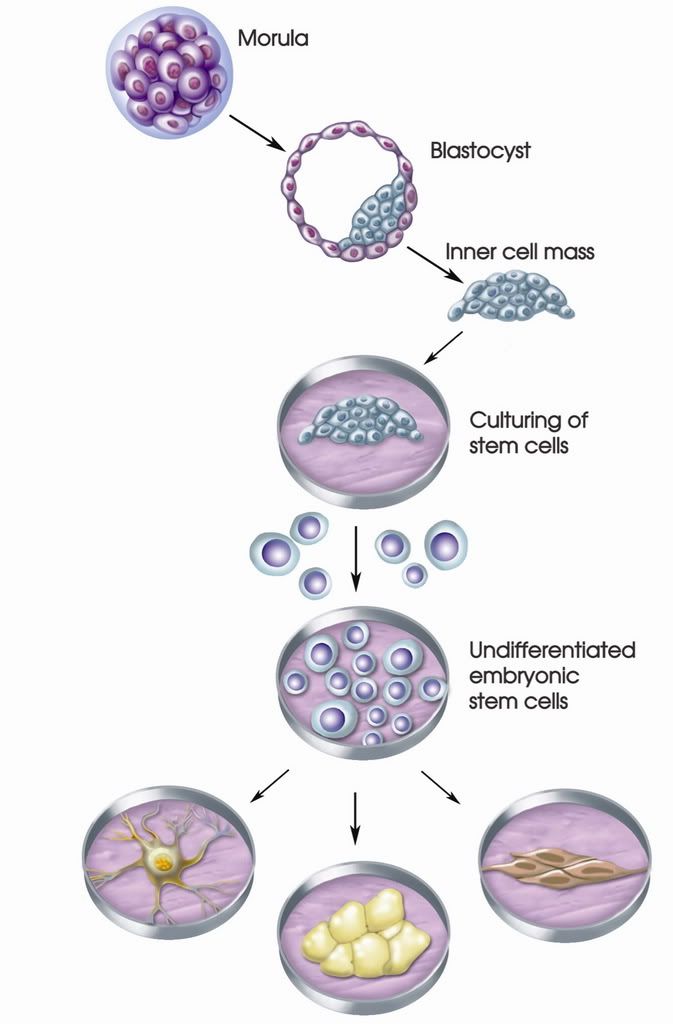CELL DIFFERENTIATION AND STEM CELLS:
The process during which young, immature (unspecialized) cells take on individual characteristics and reach their mature (specialized) form and function.
EXAMPLES:
Embryonic stem cells Fetal stem cells Cord blood stem cells and some adult stem cells are capable of performing this process.
Totipotent : Toti, meaning total, the zygote and the embryo during early stages of development have the potential to become any type of cell and can produce a whole human being.
Pluripotent: Cells which can differentiate into several different cell types,except placenta, are considered to be pluripotent
EMBRYONIC STEM CELLS:
Cells that form the inner mass of a blastocyst during embryological phase of growth (lasting 8 weeks)are called embryonic stem cells.Like all stem cells they can proliferate and give rise to specialized cells.
FETAL STEM CELLS:
The cells taken from a fetus (after 8 weeks of development an embryo is termed as such) are called fetal stem cells.
ADULT STEM CELLS:
These are undifferentiated cells found throughout the body that are involved in refurbishing the body with new cells to replace worn out ones.
Examples of stem cells in an adult:
Hematopoietic stem cells
Neural stem cells
intestinal stem cells
CORD BLOOD STEM CELLS:
The cells of the umbilical cord and placenta are unspecialized stem cells and can be cultured.
CAUSE:
Specific groups of genes are expressed in each cell type which leads to production of specific proteins (the other unneeded genes are turned off)
Proteins (coded for by the DNA) are the keys to differentiation in animal cells
The particular combination of genes that are turned on (expressed) or turned off (repressed) dictates cellular morphology (shape) and function. This process of gene expression is regulated by cues from both within and outside cells and lead to differentiation.

No comments:
Post a Comment